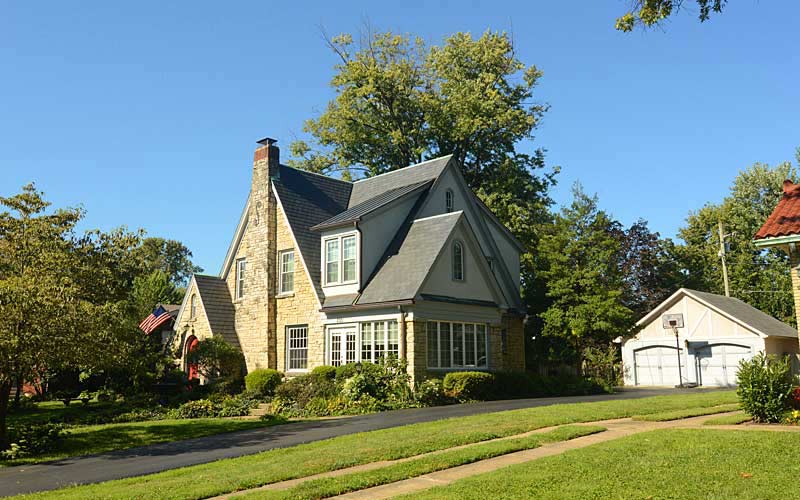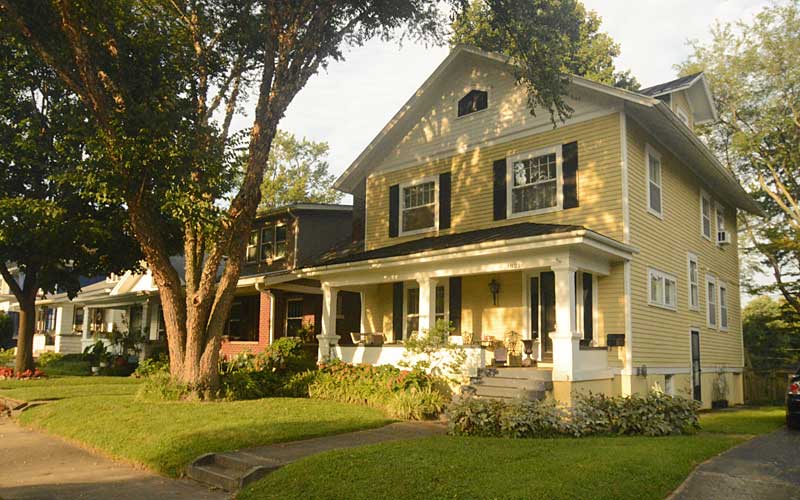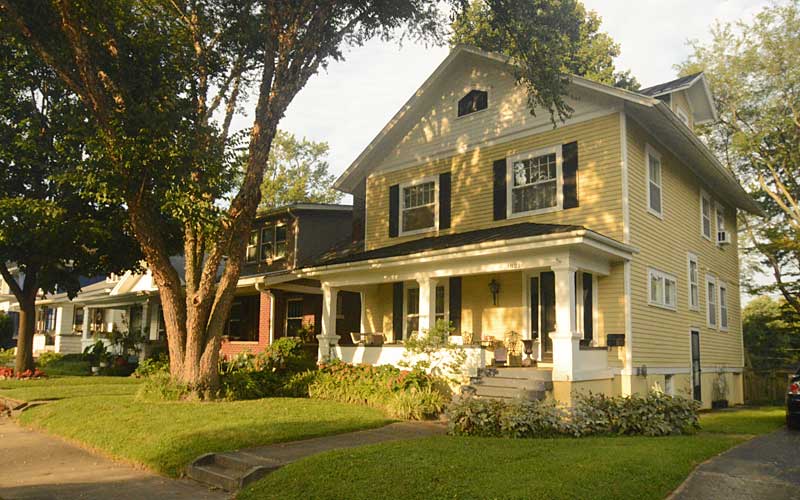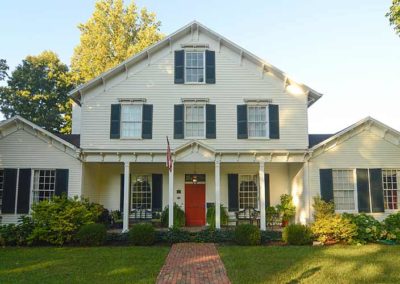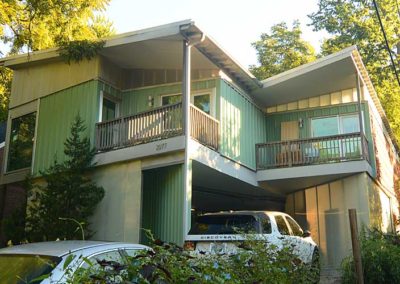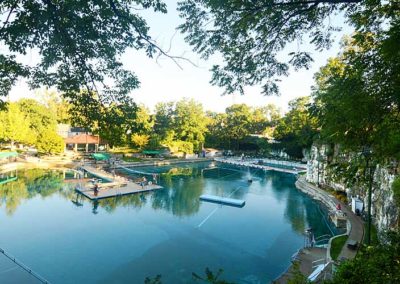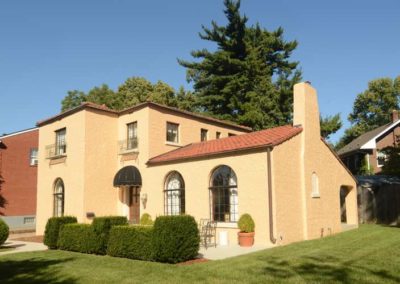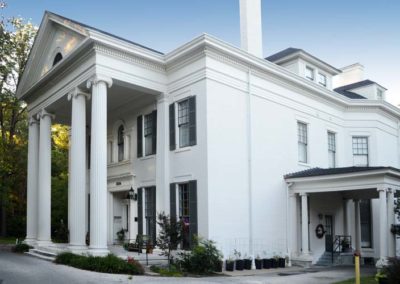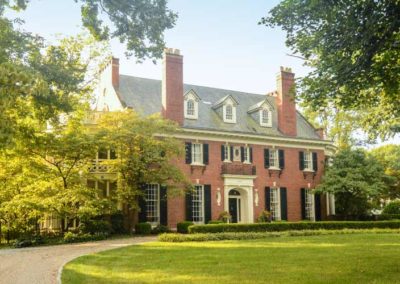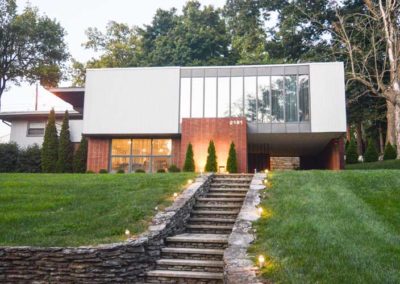In 1790 a family settled in this area from Europe. A house remains from their farm on and their family cemetery is on Bardstown Rd. where Doup and Kaelin Aves. meet.
In 1801, Jonathan Clark, older brother of George Rogers and William, built the original part of the house on 1,000 acres, at 1840 Trough Springs, and gave the acreage its name from a spring on the property. The original core of house remains intact.
The Zimlich brothers owned 80 acres between Dundee Rd. and Sewanee Dr. and ran a stage coach stop there from 1847 to 1901. A young Abraham Lincoln was known to frequent the Douglass Loop Tavern during his visits to the area in 1841. It was one of the first commercial strips along what is now Bardstown Road. The area includes the Douglass Loop and continues on Bardstown Road to St. Francis of Assisi Church. St. Francis built their first church there in 1886 where sermons were preached in German until 1910.
In the 1920’s the neighborhood evolved from grid to a curvilinear type development, and had restrictions on building materials – no frame construction was permitted.
Although much of the neighborhood had been developed before the crash of ’29, there were still many lots available. Consequently, a 1920’s house can be found next to a 1940’s house which created an interesting in-fill, often making it difficult to tell the age of a house.
The Belknap School Building, c. 1916, is on the National Register. The exterior terra cotta ornamentation make it one of the city’s finest examples of Sullivanesque detailing.
Lakeside Swim Club, originally Kaelin’s Quarry, was founded in 1924 and is surrounded by forty-foot cliffs. The quarry is filled with 3.2 million gallons of water. The original spring house is at 2147 Lakeside Drive.
The Douglass Loop streetcar turnaround was used from 1912 until 1948. The Douglass Loop is the only remaining loop in the city.
Opened in 1926, The Loop Barber Shop is the oldest continuously operating barber shop in the city.
Douglass Loop’s Twig and Leaf, a 1961 roadside diner of modern design, was one of the first modern structures to be designated a local landmark in the city.
Built in 2001, the Wyatt house on Ravinia Ave. is considered an architecturally significant house for its modern design.
Warheim Park is a neighborhood green space at Overlook Terrace, Yale Dr. and Boulevard Napoleon.
Corporations have targeted Belknap for development due to its central location, favorable demographics, and proximity to the urban core. The Belknap Neighborhood has been very successful in controlling intrusion in their neighborhood.
Recognized as one of the most livable and lovable neighborhoods in America, it is the largest neighborhood in the Highlands.
www.belknapneighborhood.org
